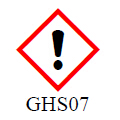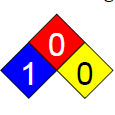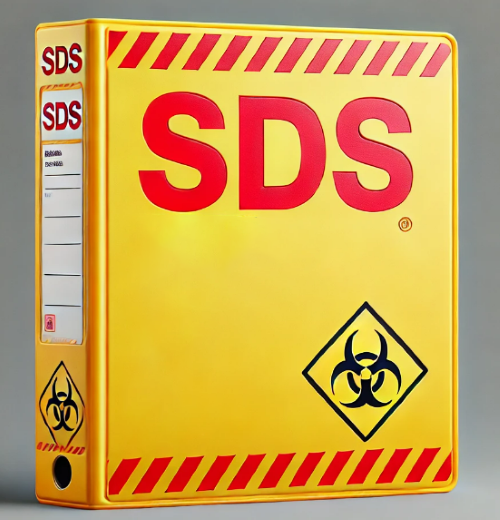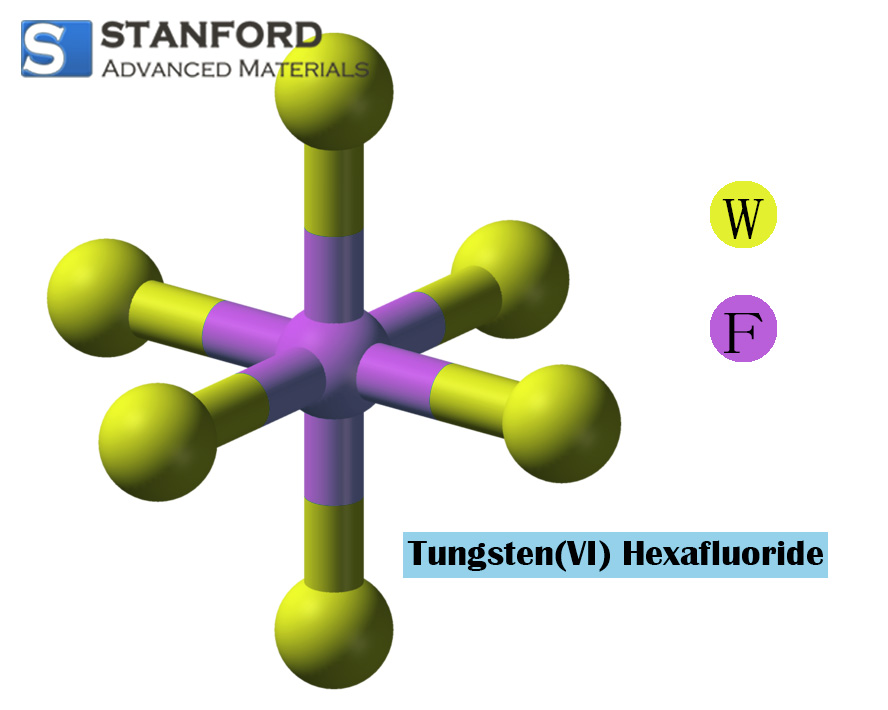Safety Data Sheet Of Silver Trifluoroacetate
1 Identification
Trade Name: Silbertrifluoracetat
CAS Number: 2966-50-9
EC Number: 236-708-3
2 Hazard Identification
– Classification of the substance or mixture
 GHS07
GHS07
Skin irritation. H315 Causes skin irritation.
Causes eye irritation. H319 Causes severe eye irritation.
May cause respiratory irritation. H335 May cause respiratory irritation.
– Labelling elements
GHS Labelling Elements
The substance is classified and labelled in accordance with the Globally Harmonised System (GHS).
– Hazard Pictograms

– Signal Word: Warning
– Hazard components in the labelling:
Silbertrifluoracetat
– Hazard statements
H315 Causes skin irritation.
H319 Causes severe eye irritation.
H335 May cause respiratory irritation.
– Precautionary statements
P262 Do not get the product in your eyes, on your skin or on your clothing.
P280 Wear protective gloves, protective clothing, eye protection and face protection.
P305+P351+P338 IF IN EYES: Rinse cautiously with water for several minutes. Remove contact lenses if present and easy to remove. Continue rinsing.
P304+P340 IF INHALED: Remove person to fresh air and ensure comfortable breathing.
P403+P233 Store in a well-ventilated place. Keep container tightly closed.
P501 Dispose of contents/ container in accordance with local/regional/national/international regulations.
– Classification system:
– NFPA Ratings (Scale 0 – 4)

Health = 1
Fire = 0
Reactivity = 0
– HMIS Ratings (Scale 0 – 4)

Health = 1
Fire = 0
Reactivity = 0
– Other hazards
Results of the PBT and vPvB assessment
– PBT: Not applicable.
– vPvB: Not applicable.
3 Composition / Information on Components
– Chemical characterisation: Substances
– CAS Number and description
2966-50-9 Silbertrifluoracetat
– Identification Number(s)
EC Number: 236-708-3
4 First Aid Measures
– Description of first aid measures
– After inhalation: If unconscious, place the patient in the recovery position for transport.
– After skin contact: Immediately wash with water and soap and rinse thoroughly.
– After eye contact:
Rinse eyes with water for several minutes while holding the eyelids open. If irritation persists, seek medical advice.
– After swallowing: If symptoms persist, consult a doctor.
– Information for the doctor:
Most important immediate and delayed symptoms and effects: No further relevant information available.
– Instructions for urgent medical treatment and specialist care:
No further relevant information available.
5 Firefighting Measures
– Extinguishing media
– Suitable extinguishing agents:
CO₂, dry chemical powder or water spray. For larger fires, use water spray or alcohol-resistant foam.
– Special hazards arising from the substance: No further relevant information available.
– Advice for firefighting
– Protective equipment: No special measures are required.
6 Accidental Release Measures
– Personal precautions, protective equipment and emergency procedures: Not required.
– Precautions for the environment: No special measures required.
– Methods and materials for containment and cleaning:
Contaminated material must be disposed of as waste in accordance with section 13. Ensure adequate ventilation.
– Reference to other sections
See section 7 for information on safe handling; see section 8 for personal protective equipment; and see section 13 for disposal.
7 Handling and Storage
– Handling:
– Precautions for safe handling: When used appropriately, no special precautions are required.
– Advice on protection against explosions and fire: No special measures are required.
– Conditions for safe storage, including any incompatibilities
– Storage:
– Requirements for storage rooms and containers: No special requirements.
– Storage in a common storage facility: Not required.
– Additional storage instructions: Keep container tightly closed.
– Specific end use: No further relevant information available.
8 Exposure Control / Personal Protective Equipment
– Additional information on the design of technical installations: No further details; see section 7.
– Control parameters
– Components with workplace-related, monitored limit values:
2966-50-9 Silbertrifluoracetat
PEL (long-term exposure limit): 0.01 mg/m³ (as Ag)
REL (long-term exposure limit): 0.01 mg/m³ (as Ag)
TLV (long-term exposure limit): 0.01 mg/m³ (as Ag)
– Additional information: The lists valid at the time of preparation have been used.
– Exposure control and monitoring
– Personal protective equipment:
– General protective and hygiene measures:
Keep away from food, beverages and feed. Remove contaminated clothing immediately. Wash hands before breaks and after work. Avoid contact with eyes and skin.
– Respiratory protection:
For short-term exposure or minor contamination, use a filter respirator. For intensive or prolonged exposure, use a supplied-air respirator.
– Hand protection:

Protective gloves – The glove material must be impermeable and resistant to the product/substance/mixture. Due to lack of tests, no recommendation can be provided regarding the glove material for this product/substance/mixture. The selection of glove material should consider breakthrough times, diffusion rates and degradation.
– Glove material:
The selection of appropriate gloves depends on both the material and additional quality aspects, which vary among manufacturers.
– Breakthrough time of the glove material:
The exact breakthrough time is to be determined by the glove manufacturer and must be observed.
– Eye protection:

Close-fitting safety goggles
9 Physical and Chemical Properties
– Basic physical and chemical properties
– General description
– Appearance:
Form: Powder
Colour: Whitish
– Odour: Odourless
– Odour threshold: Not determined.
– pH value: Not applicable.
– Phase changes
Melting point/range: No information °C
Boiling point/range: No information °C
– Flash point: Not applicable.
– Flammability (solid, gaseous): The product is non-flammable.
– Flame temperature:
Decomposition temperature: Not determined.
– Self-ignition: Not determined.
– Explosion hazard: The product does not pose an explosion hazard.
– Explosive limits:
Lower: Not determined.
Upper: Not determined.
– Vapour pressure: No information hPa
– Density: Not determined.
– Relative density: Not determined.
– Vapour density: Not applicable.
– Evaporation rate: Not applicable.
– Solubility in / Miscibility with
Water: Insoluble.
– Partition coefficient (n‑octanol/water): Not determined.
– Viscosity:
Dynamic: Not applicable.
Kinematic: Not applicable.
– Solvent content:
Organic solvents: 0.0 %
VOC content: 0.0 g/l / 0.00 lb/gl
Solid content: 100.0 %
– Other information: No further relevant information available.
10 Stability and Reactivity
– Reactivity: No further relevant information available.
– Chemical stability
– Thermal decomposition / conditions to avoid: No decomposition under intended use.
– Possibility of hazardous reactions: No hazardous reactions are known.
– Conditions to avoid: No further relevant information available.
– Incompatible materials: No further relevant information available.
– Hazardous decomposition products: No hazardous decomposition products are known.
11 Toxicological Information
– Toxicological effects
– Acute toxicity:
– Primary irritant effects:
On the skin: Irritates the skin and mucous membranes.
In the eyes: Exhibits an irritating effect.
– Sensitisation: No sensitising effects are known.
– Additional toxicological information:
– Carcinogenic classifications
– IARC (International Agency for Research on Cancer)
The substance is not listed.
– NTP (National Toxicology Program)
The substance is not listed.
– OSHA-Ca (Occupational Safety & Health Administration)
The substance is not listed.
12 Ecological Information
– Toxicity
– Aquatic toxicity: No further relevant information available.
– Persistence and degradability: No further relevant information available.
– Behaviour in environmental systems:
– Bioaccumulation potential: No further relevant information available.
– Mobility in soil: No further relevant information available.
– Additional ecological information:
– General remarks: Not known as water hazardous.
– Results of the PBT and vPvB assessment
– PBT: Not applicable.
– vPvB: Not applicable.
– Other harmful effects: No further relevant information available.
13 Disposal Considerations
– Methods of waste treatment
– Recommendation:
Do not dispose of with household waste. Ensure that the product does not enter the sewage system.
– Uncleaned packaging:
– Recommendation: Disposal must be carried out in accordance with statutory regulations.
14 Transport Information
– UN Number
– DOT, ADN, IMDG, IATA: Not regulated
– UN Proper Shipping Name
– DOT, ADN, IMDG, IATA: Not regulated
– Transport hazard class(es)
– DOT, ADN, IMDG, IATA: Class not regulated
– Packaging group
– DOT, IMDG, IATA: Not regulated
– Environmental hazards:
– Ship hazardous: No
– Special precautions for the user: Not applicable.
– Bulk transport in loose quantities in accordance with Annex II of MARPOL73/78 and the IBC Code: Not applicable.
UN "Model Regulation": Not regulated
15 Regulatory Information
Safety, health and environmental regulations/legislation specific for the substance or mixture
– SARA
– Section 355 (extremely hazardous substances): The substance is not listed.
– Section 313 (listing specific toxic chemicals): The substance is listed.
– TSCA (Toxic Substances Control Act): The substance is listed.
– Proposition 65
– Chemicals known to cause cancer: The substance is not listed.
– Chemicals known to cause reproductive toxicity in women: The substance is not listed.
– Chemicals known to cause reproductive toxicity in men: The substance is not listed.
– Chemicals known to cause developmental toxicity: The substance is not listed.
– Carcinogenic classifications
– EPA (Environmental Protection Agency): The substance is not listed.
– TLV (Threshold Limit Value, as determined by ACGIH): The substance is not listed.
– NIOSH-Ca (National Institute for Occupational Safety and Health): The substance is not listed.
GHS Labelling Elements
The substance is classified and labelled in accordance with the Globally Harmonised System (GHS).
– Hazard Pictograms

– Signal Word: Warning
– Hazard components in the labelling:
Silbertrifluoracetat
– Hazard statements
H315 Causes skin irritation.
H319 Causes severe eye irritation.
H335 May cause respiratory irritation.
– Precautionary statements
P262 Do not get the product in your eyes, on your skin or on your clothing.
P280 Wear protective gloves, protective clothing, eye protection and face protection.
P305+P351+P338 IF IN EYES: Rinse with water for several minutes. Remove contact lenses if present and easy to remove. Continue rinsing.
P304+P340 IF INHALED: Remove person to fresh air and ensure comfortable breathing.
P403+P233 Store in a well-ventilated place. Keep container tightly closed.
P501 Dispose of contents/ container in accordance with local/regional/national/international regulations.
– Chemical safety assessment: A chemical safety assessment has not been carried out.
16 Other Information
These details are based on the current state of our knowledge. They do not constitute a guarantee of specific product properties and do not establish a contractual relationship.
– Abbreviations and acronyms:
ADR: Accord européen sur le transport des marchandises dangereuses par Route (European Agreement concerning the International Carriage of Dangerous Goods by Road)
IMDG: International Maritime Dangerous Goods Code
DOT: United States Department of Transportation
IATA: International Air Transport Association
ACGIH: American Conference of Governmental Industrial Hygienists
EINECS: European Inventory of Existing Commercial Chemical Substances
CAS: Chemical Abstracts Service (a division of the American Chemical Society)
NFPA: National Fire Protection Association (USA)
HMIS: Hazardous Materials Identification System (USA)
VOC: Volatile Organic Compounds (USA, EU)
PBT: Persistent, Bioaccumulative and Toxic
vPvB: very Persistent and very Bioaccumulative
NIOSH: National Institute for Occupational Safety and Health
OSHA: Occupational Safety and Health Administration
TLV: Threshold Limit Value
PEL: Permissible Exposure Limit
REL: Recommended Exposure Limit
Hautreizung. 2: Skin corrosion/irritation, Hazard Category 2
Augenreizung. 2A: Serious eye irritation/damage, Hazard Category 2A
STOT SE 3: Specific Target Organ Toxicity – Single Exposure, Hazard Category 3

 Bars
Bars
 Beads & Spheres
Beads & Spheres
 Bolts & Nuts
Bolts & Nuts
 Crucibles
Crucibles
 Discs
Discs
 Fibers & Fabrics
Fibers & Fabrics
 Films
Films
 Flake
Flake
 Foams
Foams
 Foil
Foil
 Granules
Granules
 Honeycombs
Honeycombs
 Ink
Ink
 Laminate
Laminate
 Lumps
Lumps
 Meshes
Meshes
 Metallised Film
Metallised Film
 Plate
Plate
 Powders
Powders
 Rod
Rod
 Sheets
Sheets
 Single Crystals
Single Crystals
 Sputtering Target
Sputtering Target
 Tubes
Tubes
 Washer
Washer
 Wires
Wires
 Converters & Calculators
Converters & Calculators
 Write for Us
Write for Us
 Chin Trento
Chin Trento


